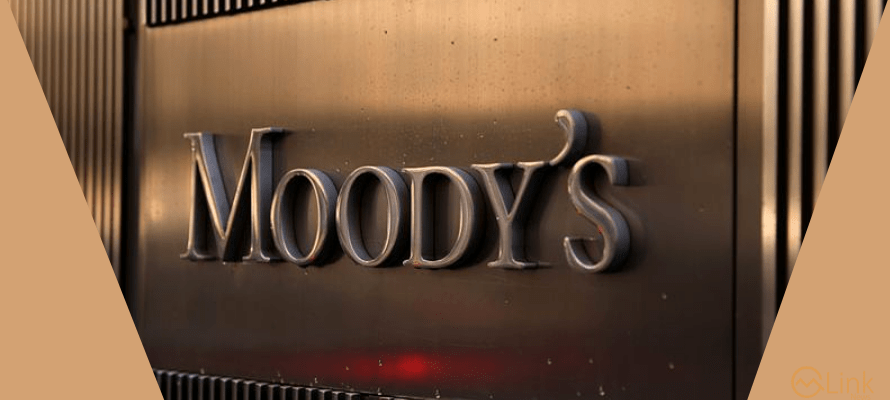Moody’s affirms Pakistan’s credit rating at 'Caa3' with a stable outlook

By MG News | February 28, 2024 at 12:21 PM GMT+05:00
February 28, 2024 (MLN): Moody's Investors Service has affirmed Pakistan's long-term issuer rating at 'Caa3" with a stable outlook, citing the government's very high liquidity and external vulnerability risks due to significantly low foreign exchange reserves.
These reserves remain well below the levels necessary to meet the country's very high external financing needs in the near to medium term, according to Moody's.
The country's very weak fiscal strength and elevated political risks also constrain its credit profile. At the same time, Pakistan's credit profile takes into account its large economy and moderate growth potential, which contribute to its moderate economic strength.
Pakistan's government liquidity and external vulnerability risks remain very high, even as the caretaker government has maintained economic stability and pushed through some reforms over the past few months, unlocking financing from the IMF and other multilateral and bilateral partners and resulting in a modest accumulation of foreign exchange reserves.
While Pakistan is likely to meet its external debt obligations for the fiscal year ending June 2024, there is limited visibility regarding the sovereign's sources of financing to meet its very high external financing needs after the current IMF Stand-By Arrangement ends in April 2024.
In addition, political risks are high, following a highly controversial general election held on 8 February 2024.
Although a coalition government looks set to be formed primarily, there is high uncertainty around the newly elected government's willingness and ability to quickly negotiate a new IMF program soon after the current one expires in April.
The forthcoming coalition government's electoral mandate may not be sufficiently strong to pursue difficult reforms that will likely be required by a successor program.
Until a new program is agreed to, Pakistan's ability to secure loans from other bilateral and multilateral partners will be severely constrained.
Pakistan's "baa3" economic strength balances the country's large economy and moderate GDP growth potential against its low per capita income.
The score also incorporates Pakistan's high exposure to extreme weather events, such as heat waves and floods, which can create negative economic and social costs.
Pakistan's institutions and governance strength score is at "b3", reflecting the country's weak governance and low monetary and fiscal policy effectiveness.
The "ca" fiscal strength reflects the country's large debt burden and very weak debt affordability. The high debt-servicing requirements associated with the large stock of debt will reduce the fiscal flexibility to undertake key expenditures on infrastructure and social initiatives.
Pakistan's susceptibility to event risk is at "caa", driven by very high government liquidity and external vulnerability risks.
The stable outlook reflects Moody's assessment that the pressures that Pakistan faces are consistent with a Caa3 rating level, with broadly balanced risks.
Continued IMF engagement, including beyond the current program, would help support additional financing from other multilateral and bilateral partners, which could reduce default risk if this is achieved urgently and without further raising social pressures.
At the same time, the large amount of external financing required over the medium term, combined with Pakistan's very low reserves position, imply material default risks if there were delays in funding from the IMF and other partners.
Social pressures and weaknesses in governance may also raise challenges in meeting criteria for future IMF funding.
The rating would likely be upgraded if Pakistan's government liquidity and external vulnerability risks decreased materially and durably. This could come with a sustainable increase in foreign exchange reserves.
A resumption of fiscal consolidation, including through implementing revenue-raising measures, pointing to a meaningful improvement in debt affordability would also be credit positive.
The rating would likely be downgraded if Pakistan were to default on its debt obligations to private-sector creditors and the expected losses to creditors as a result of any restructuring were larger than consistent with a Caa3 rating.
Copyright Mettis Link News
Related News
| Name | Price/Vol | %Chg/NChg |
|---|---|---|
| KSE100 | 132,561.30 93.32M |
-0.63% -841.89 |
| ALLSHR | 82,936.67 512.65M |
-0.30% -251.39 |
| KSE30 | 40,338.24 33.45M |
-0.77% -313.21 |
| KMI30 | 190,711.62 37.57M |
-0.71% -1372.30 |
| KMIALLSHR | 55,673.63 263.02M |
-0.31% -174.06 |
| BKTi | 36,174.80 5.88M |
-0.68% -248.07 |
| OGTi | 28,224.63 7.08M |
-0.75% -212.98 |
| Symbol | Bid/Ask | High/Low |
|---|
| Name | Last | High/Low | Chg/%Chg |
|---|---|---|---|
| BITCOIN FUTURES | 109,240.00 | 109,545.00 108,625.00 |
25.00 0.02% |
| BRENT CRUDE | 70.04 | 70.09 69.85 |
-0.11 -0.16% |
| RICHARDS BAY COAL MONTHLY | 97.50 | 0.00 0.00 |
2.05 2.15% |
| ROTTERDAM COAL MONTHLY | 106.65 | 106.65 106.25 |
0.50 0.47% |
| USD RBD PALM OLEIN | 998.50 | 998.50 998.50 |
0.00 0.00% |
| CRUDE OIL - WTI | 68.20 | 68.27 67.78 |
-0.13 -0.19% |
| SUGAR #11 WORLD | 16.15 | 16.37 16.10 |
-0.13 -0.80% |
Chart of the Day
Latest News
Top 5 things to watch in this week
Pakistan Stock Movers
| Name | Last | Chg/%Chg |
|---|
| Name | Last | Chg/%Chg |
|---|

.jpeg)
.png)
